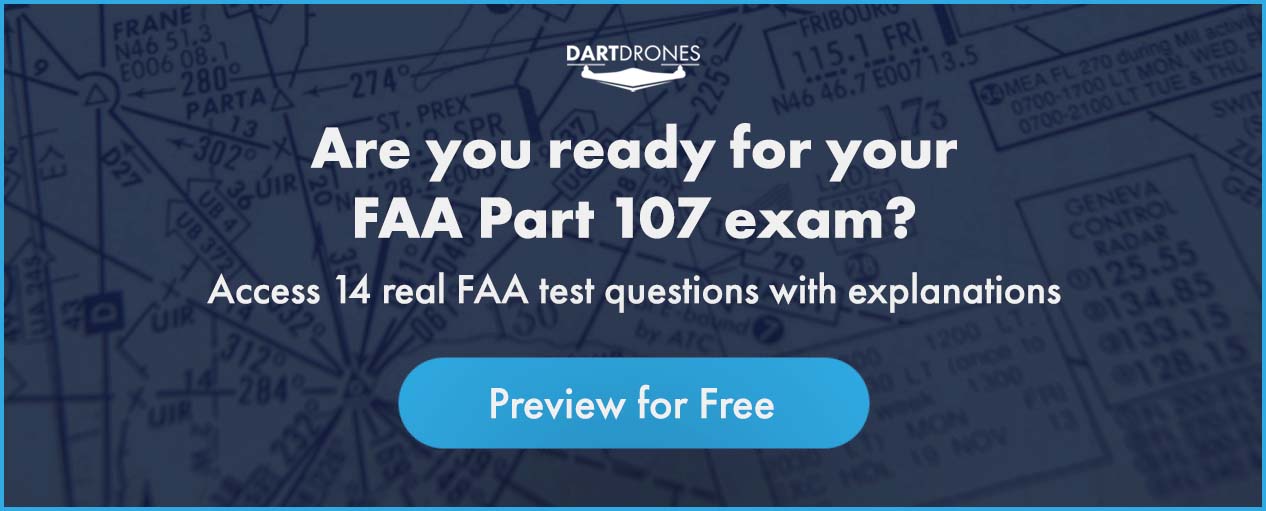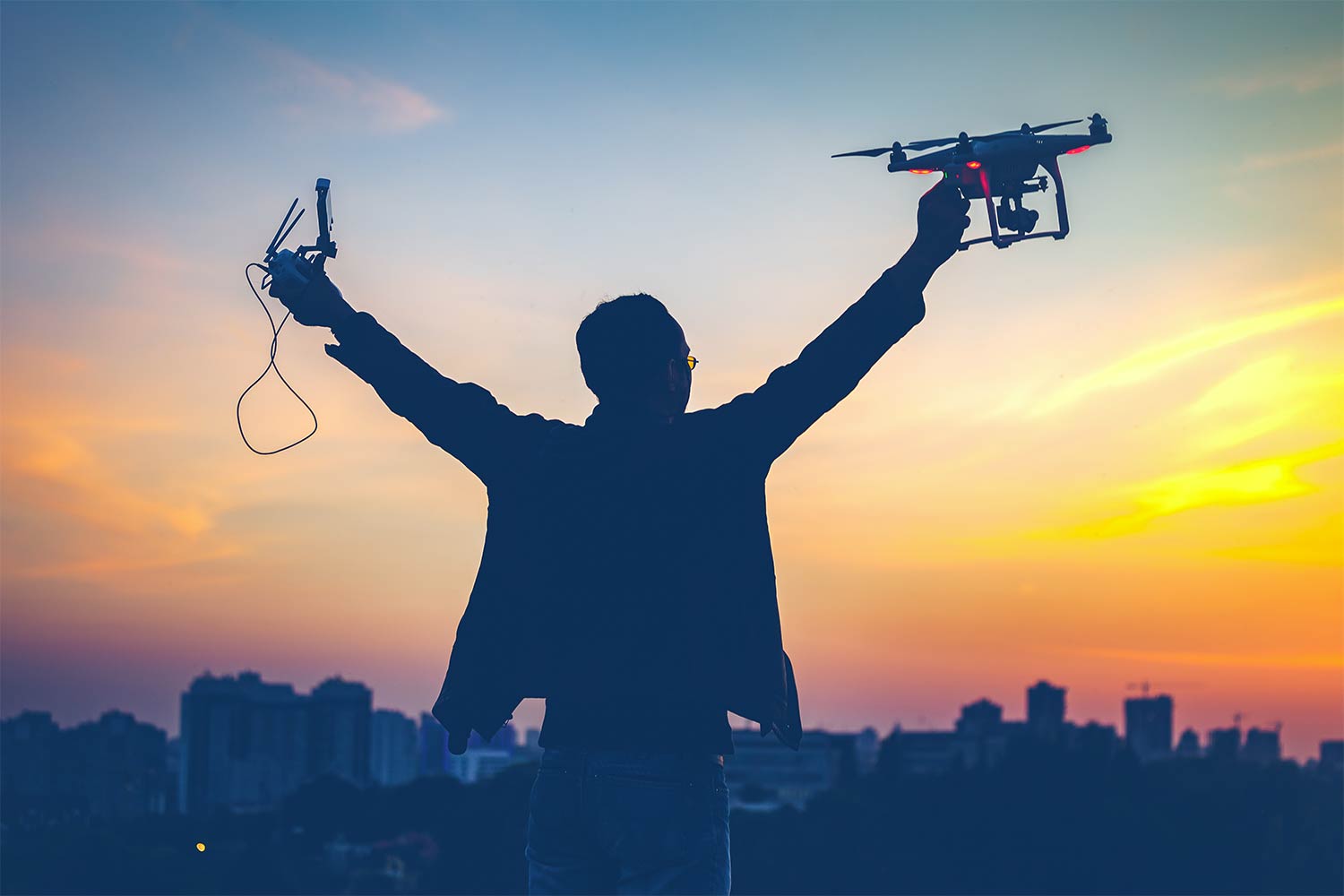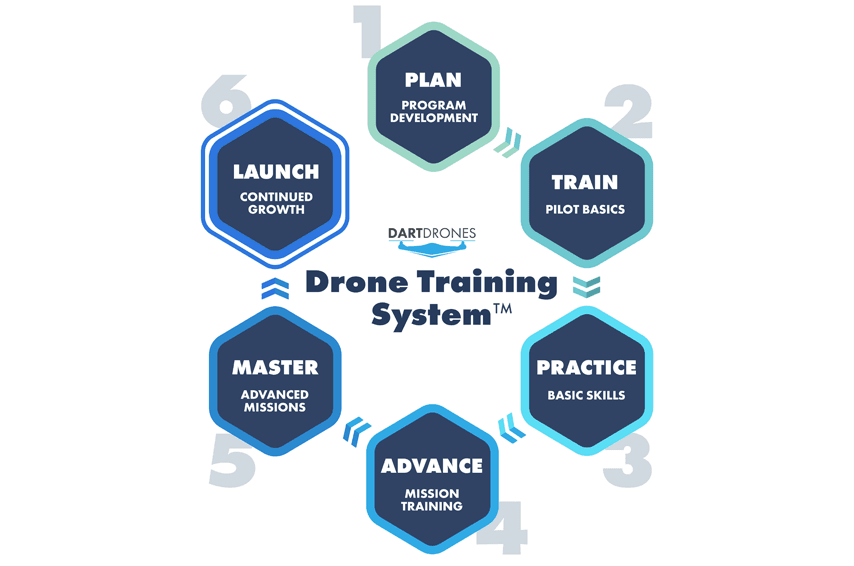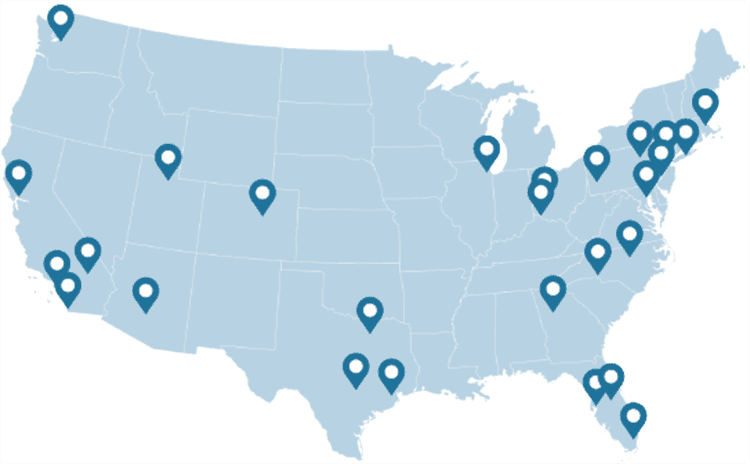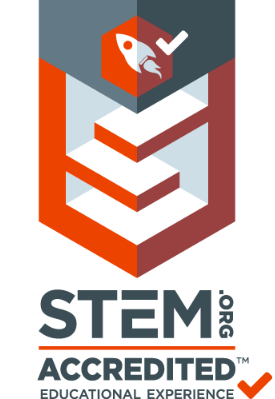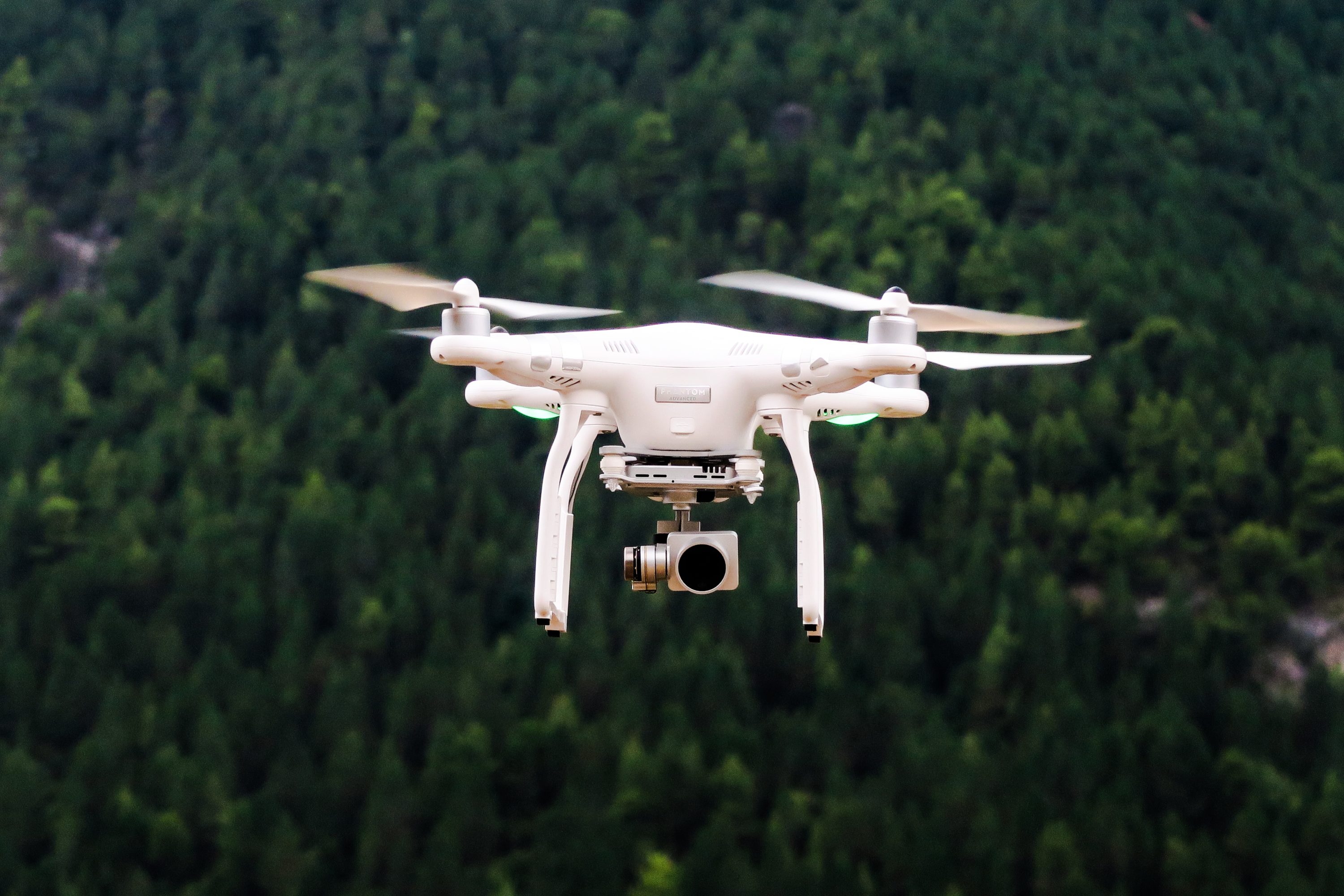
National Drone Laws – What are they?
Are you wondering what national drone laws you need to be aware of as a drone pilot? It’s a good question because there are three types of regulating bodies in play when it comes to flying your drone: Federal drone laws, state drone laws, and local drone laws.
First, there are the federal drone rules that are established by the Federal Aviation Administration (FAA). These rules are broken into subsets based on the type of drone pilot you are.
Let’s take a look at the FAA drone pilot rules as they apply to different types of drone pilots.
Recreational Drone Pilot
- Fly your drone for your enjoyment only. This defines flying a drone for recreational purposes.
- Always keep your drone in visual line of sight (VLOS) or use a visual observer to keep an eye on it with you.
- Never interfere with manned aircraft and always give way.
- Fly at or below 400 feet in controlled airspace and use resources like DroneZone and LAANC to make sure you’re in compliance.
- Fly at or below 400 feet in uncontrolled airspace (Class G).
- Coming soon is the Recreational UAS Safety Test (TRUST), so be sure to take that test when it comes available and retain proof of passage.
- Be sure to register your drone, mark the aircraft with the registration number and keep the certificate with you whenever you’re flying.
- Be a responsible drone pilot by not operating your drone in a dangerous manner. This includes interfering with law enforcement and emergency responders, and never fly under the influence of drugs or alcohol.
Be aware that a breach of any of these rules may subject you to FAA enforcement.
Commercial Drone Pilot
If you’ve studied for, taken, and passed your FAA Part 107 drone pilot test, you can operate a registered drone weighing less than 55 lbs as a commercial drone pilot. At this point you can make money with your drone. A commercial drone pilot must adhere to the same rules as a recreational drone pilot, with a few additions. The FAA has compiled a summary of the Part 107 drone rules here. Since the publication of those rules, there have been a few changes with regards to drone flights at night and flights over people.
The FAA advises that “The Operations Over People rule became effective on April 21, 2021. Drone pilots operating under Part 107 may fly at night over people, and moving vehicles without a waiver as long as they meet the requirements defined in the rule. Airspace authorizations are still required for night operations in controlled airspace under 400 feet.”
Public Safety and Government Drone Pilots
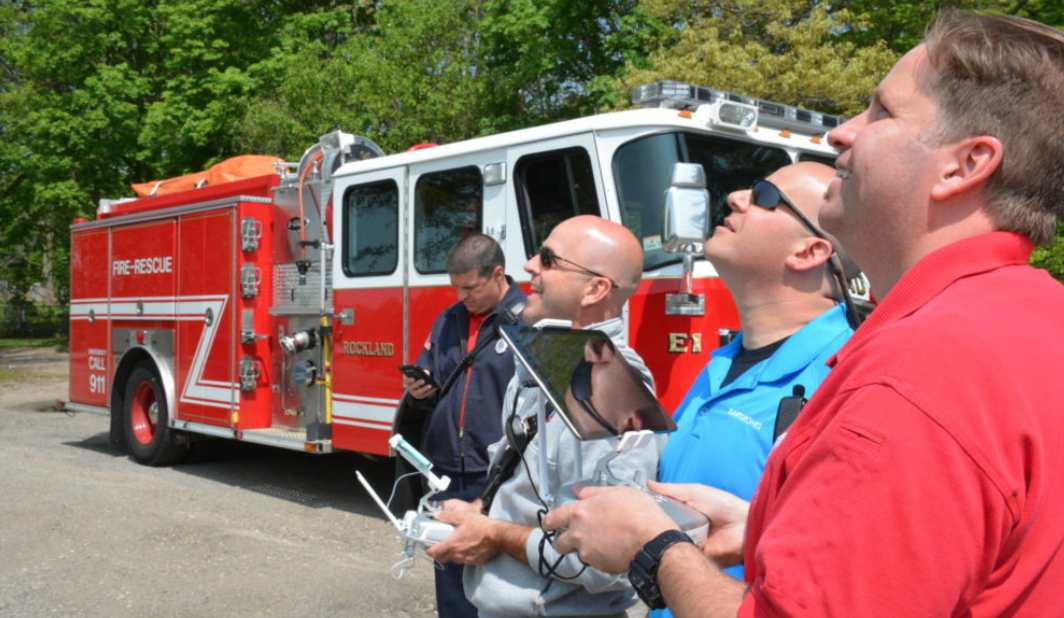 Public safety and government officials have two options for operating a drone under 55 lbs. A drone pilot could hold an FAA Part 107 pilot certificate, or he or she could maintain a Certificate of Waiver or Authorization (COA) to be able to fly a drone for governmental purposes. If you’re wondering if your organization qualifies for a COA, check out this article regarding COAs to get details about how to go about obtaining one.
Public safety and government officials have two options for operating a drone under 55 lbs. A drone pilot could hold an FAA Part 107 pilot certificate, or he or she could maintain a Certificate of Waiver or Authorization (COA) to be able to fly a drone for governmental purposes. If you’re wondering if your organization qualifies for a COA, check out this article regarding COAs to get details about how to go about obtaining one.
The FAA has put together this public safety toolkit with associated documents and links.
Educational Drone Pilots
There are a couple considerations for flying drones for educational purposes. The “Limited Exception for Recreational Flyers and Community-Based Organizations” allows that a pilot may fly a drone without obtaining a Part 107 drone license if the flight is for recreational purposes only. The rules here are the same as the recreational drone flight rules. And of course you can always earn your FAA Part 107 drone pilots license and fly for educational purposes.
State Drone Laws
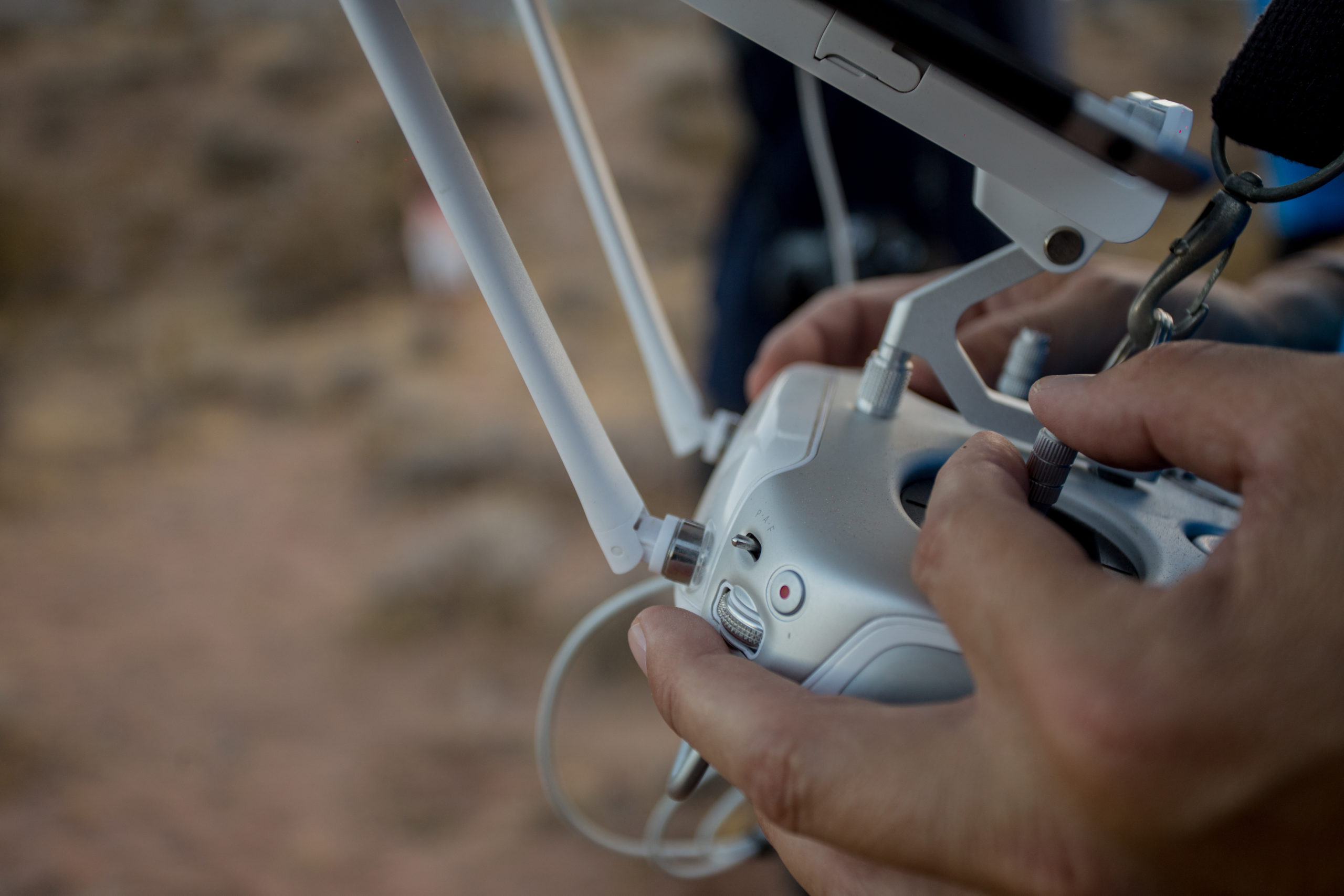 In addition to adhering to the federal drone laws, states can make their own drone rules at the state level. The overwhelming majority of these laws pertain to the use of drones by law enforcement and the use of footage captured, unlawful surveillance of persons where reasonable privacy is expected, and scouting and tracking game animals for hunting purposes.
In addition to adhering to the federal drone laws, states can make their own drone rules at the state level. The overwhelming majority of these laws pertain to the use of drones by law enforcement and the use of footage captured, unlawful surveillance of persons where reasonable privacy is expected, and scouting and tracking game animals for hunting purposes.
Most states also prohibit flying drones around critical infrastructure and most certainly prohibit drones from interfering with emergency services. States can also prohibit the use of drones in state parks and designated wilderness areas. There is often signage at entrances to state parks that will tell you if drone operation isn’t welcome.
As each state has different laws pertaining to its unique situation, it is important to do your due diligence and research those requirements and limitations prior to flying your drone.
In 2020, the National Conference of State Legislatures (NCSL) met and discussed recent state drone legislation enacted by several states. The result was 11 new pieces of legislation regarding drone laws spanning the country including Florida, Idaho, Massachusetts, Minnesota, Missouri, South Dakota, Vermont and Virginia. The following list from NCSL summarizes the legislative decisions on state drone laws:
“Four states—Florida, Idaho, Minnesota and South Dakota—allowed UAS operations by emergency management workers, including wildfire management.
Two states—Minnesota and Missouri—prohibited UAS flying over property, including correctional and mental health facilities and open-air facilities such as sports stadiums.
Two states—Idaho and Minnesota—permitted law enforcement agencies to operate UAS for specified purposes, including traffic crash reconstruction, search and rescue missions, and training purposes.
One state—Vermont—prohibited law enforcement from operating UAS while using facial recognition, except for purposes such as search and rescue and assessing wildfires, floods and storms.
Three states—Florida, Massachusetts and Virginia—appropriated funds for UAS-related certifications, programs and public-private partnerships.
One state—Virginia—empowered localities to regulate the takeoff and landing of UAS on property owned by the locality. Previously, localities were preempted from regulating UAS.”
Local Drone Laws
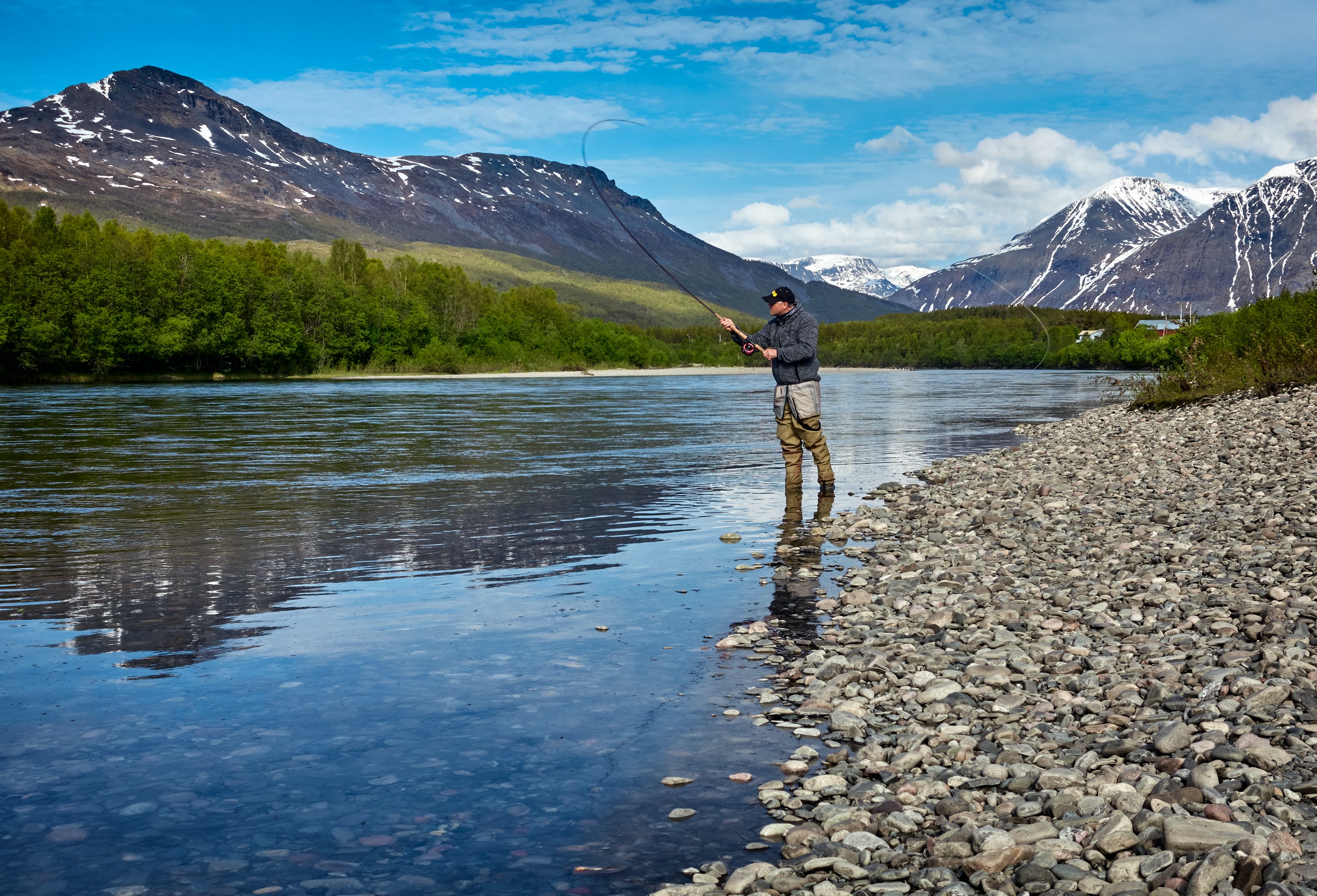 There are local drone laws that place limits on the use of drones in certain cities, towns, and municipalities. For example, the state of Alaska has a local drone law that is very regionally and seasonally specific: “In the Southeastern Alaska Area, (a) during an open commercial salmon fishing period, a person may not use an unmanned aircraft to locate salmon for the commercial taking of salmon or to direct commercial salmon fishing operations.”
There are local drone laws that place limits on the use of drones in certain cities, towns, and municipalities. For example, the state of Alaska has a local drone law that is very regionally and seasonally specific: “In the Southeastern Alaska Area, (a) during an open commercial salmon fishing period, a person may not use an unmanned aircraft to locate salmon for the commercial taking of salmon or to direct commercial salmon fishing operations.”
Because state and local drone laws can change based on necessity and use, it is important to not only adhere to the overarching federal drone regulations, but also be aware of any state and local regulations that may be in place. As with the example in Southeast Alaska, it could be a law you wouldn’t even think about because it’s so specific. Keep the rules of the sky in mind, and check with your state legislature to get the most up-to-date drone regulations.
About the Author
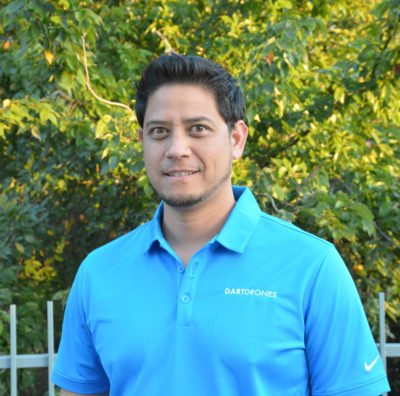 Sean has been a private pilot and commercial Unmanned Aerial Systems operator since 2015 and is an active member of the Civil Air Patrol. He is a Florida local, born in Daytona Beach and living in Orlando. After joining the Navy at the age of 19, he served a six year enlistment as a Nuclear Operator on the USS Harry S. Truman (CVN-75). Subsequent pivot points include Founder and Chief Executive Officer of Nautical Horizons, LLC, Chief Seismic Navigator for offshore oil & gas, a Masters Degree in Ocean Engineering with a design thesis, and a patent for ocean instrumentation devices.
Sean has been a private pilot and commercial Unmanned Aerial Systems operator since 2015 and is an active member of the Civil Air Patrol. He is a Florida local, born in Daytona Beach and living in Orlando. After joining the Navy at the age of 19, he served a six year enlistment as a Nuclear Operator on the USS Harry S. Truman (CVN-75). Subsequent pivot points include Founder and Chief Executive Officer of Nautical Horizons, LLC, Chief Seismic Navigator for offshore oil & gas, a Masters Degree in Ocean Engineering with a design thesis, and a patent for ocean instrumentation devices.
DARTdrones is the nation’s leader in drone training, program development and consultation, offering online and in-person courses in 40+ cities across the United States. DARTdrones takes pride in their comprehensive curriculum, developed by a former US Navy Helicopter pilot, as well as their 40+ flight instructors who are all manned and unmanned aircraft pilots. Visit us online at www.dartdrones.com, call 800-264-3907 or email the DARTdrones Team at [email protected] to learn more.

